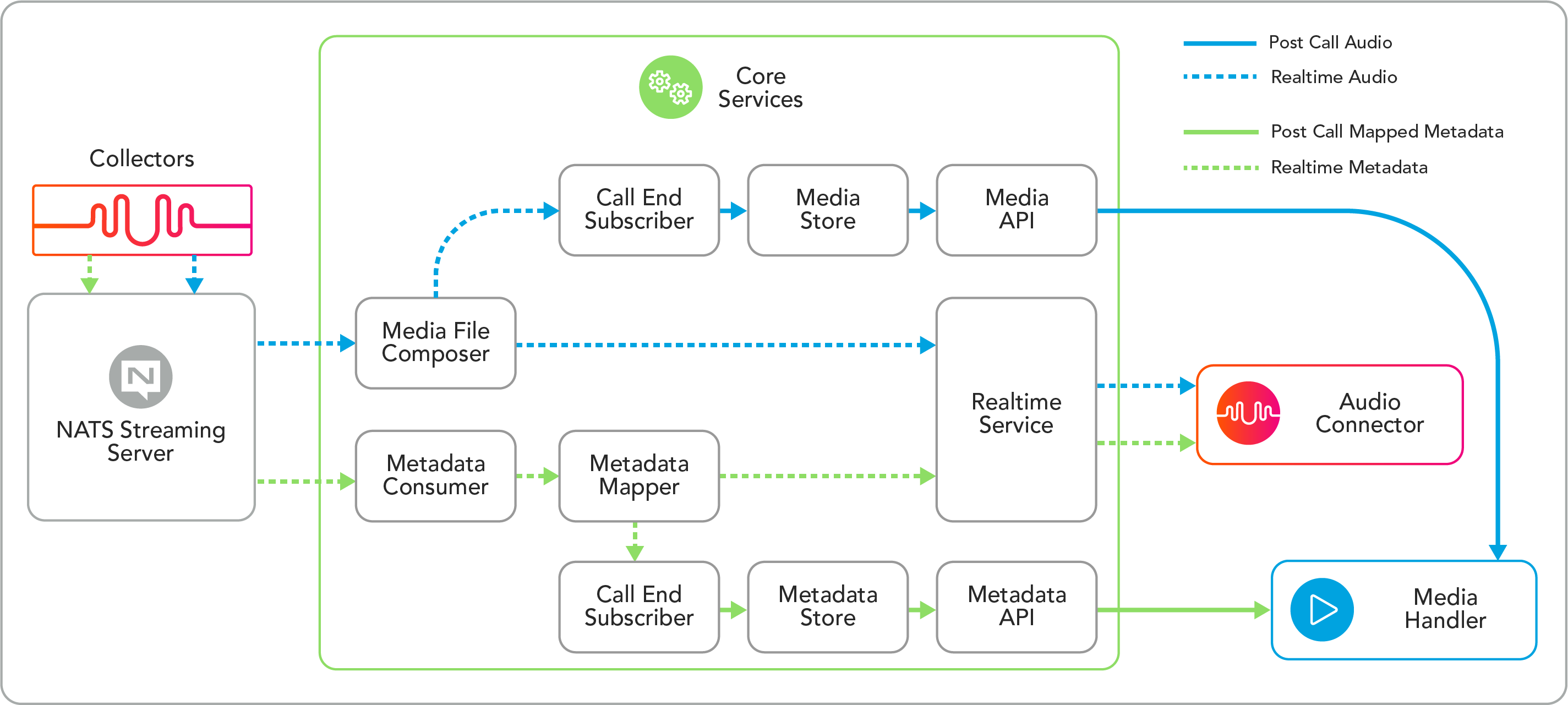Core Services
The U-Capture Core Services are containerised using containerd (from Docker) and managed by Kubernetes orchestration software on top of a Linux OS. A “base” deployment of a Kubernetes cluster makes use of a single master node and three worker nodes. Kubernetes and Docker orchestration software handles the planning, coordination, and management of the individual elements of the system. On the most part, Kubernetes/Docker operation is automatic and will maintain the live state of the U-Capture Core Services.
Note
These services work in the background, they are deployed and managed by Uniphore - system administrators wont typically need to be concerned with managing the Core Services.
The diagram below illustrates the general data flow for recorded media and metadata from capture at the Collector through the Core Services to the Audio Connector and the Media Handler.

The Media File Composer and Metadata Consumer receive the data chunks from the NATS Streaming Server over websocket. The data is transcoded and then sent to the Audio Connector, this processes is known as the "Realtime Feed". Each realtime event (for example, call start, realtime suppression, etc) and live metadata are all processed and stored in the Event Store, the realtime events stream in the Event Store is monitored to determine which calls to send to the Audio Connector.
Once the capture process is complete (the call ends), media is processed and stored in the Media Store and the mapped metadata is stored in the Metadata Store - The Media API and Metadata API are used to retrieve the media and metadata retained in the Media and Metadata Stores, this is how media and metadata is passed to the Media Handler, but it's worth noting that other systems/components can use these APIs as well, for example U-Self Serve can make use of these APIs.
The U-Capture Metadata Mapper service maps the raw metadata to a universal format (often referred to as the Common Object Model or COM) regardless of the source of the recording, consisting of agent data, device data, call data, system data, and annotations/customized metadata fields.
Some data fields are generic and will always be provided (such as CallStartDateTime), while other data fields can depend on your telephony system, availability of Agent related data, the media type recorded, the device type recorded, U-Capture system capabilities, etc. The U-Capture Services Configuration API also provides functionality to set up mapping overrides, giving additional flexibility for COM mapping.
For metadata specific to your communications system and its related recording capabilities, please refer to your recording Technical Guidelines for details.